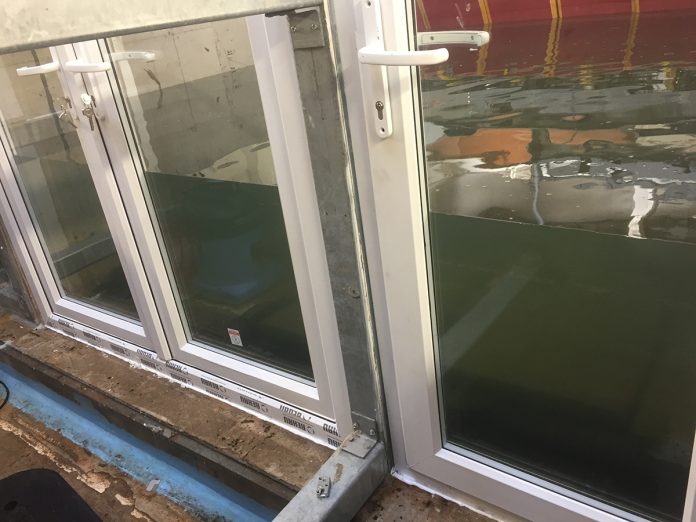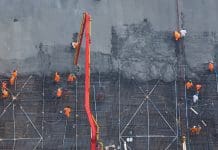Millions of homes are at risk of flooding, yet take-up of property resilience measures still faces a number of barriers. Aquobex examines the market
The Property Level Flood Protection (PLP) market, now referred to by Defra and others as Property Level Resilience (PLR), is still a very fragile and immature market, despite being nearly 20 years old now.
Even though there are around three million homes at risk of flooding in England and Wales, there are huge constraints for manufacturers and suppliers of property flood protection solutions into this market.
Finance, insurance, apathy and standards are all obstacles to be overcome before people will consider PLR solutions for their properties.
Finance is a concern for homeowners and business owners but at least there are grants available from time-to-time from the government for homeowners – although, perversely, this then disincentivises people from spending their own money if they believe a grant will be available. No such support is normally available for any business, though, including the small businesses that are the heart of many communities, who often find it very difficult to recover from large flooding events.
Apathy is another inhibitor. It is tied into finance to a degree but, in reality, most people believe that flooding will not affect them. Indeed, a study of several years’ vintage by a northern university found that most people will flood three times before deciding to take any action.
Insurance and standards are very highly linked and deserve a closer and more in-depth analysis.
It is good that FloodRe is available for the 200,000 “most at-risk” properties in the country but, again, this can be a disincentive for people to protect their homes as they simply rely on the insurer to repair the damage caused by the next flood, with no steps being taken to actually prevent the flood in the first place.
There may be numerous reasons why insurers do not insist on flood protection measures in return for affordable insurance premiums but perhaps the largest concern they have is around standards and their adherence.
There has been a publicly available standard – PAS1188 – available since 2003 that has attempted to offer customers and insurers confidence when PLR products are purchased.
This standard has been improved over the years and the latest version, which was reviewed in 2014, only allows for a leakage rate of 0.5 litres per hour for a typical door opening.
The standard is being reviewed and converted into a full British Standard (BS 851188) in the autumn of 2019, which will keep the leakage rates as now but introduce additional testing, such as for impacts and lifetime performance.
This last point is a great step forward in this latest standard because doors are predominantly just that throughout most of their life. Their flood protection function is only performed occasionally but should not be jeopardised by normal use, so testing to the new British Standard will better reflect real life.
The industry is also trying to improve survey, design, installation and maintenance standards. Through the Defra Roundtable and CIRIA, a code of practice will be delivered this summer as well.
All of this, however, is greatly undermined by government tendering processes that a) suggests there is an equivalent accreditation scheme to PAS1188, without being able to identify what this is and b) always purchases the lowest priced solution.
Insurers need to understand what it is they are insuring. The flood industry and stakeholders need to look at the fire and security industries to learn lessons.
Insurers commonly refer to BS 36211 for lock standards and manufacturers make products that meet this criterion. BS 9999 is the code of practice for fire safety in the design, management and use of buildings, provides a best practice framework for fire safety, while BS 5839 is the standard for fire detection and alarm systems in buildings. None of these have equivalents.
Aquobex works very closely with Aviva as their specialist flood protection partner and there is the expectation that any products provided to their customers will meet the relevant industry standard.
Questions about the link between flood protection products and insurance have abounded for a generation but have never truly been settled. The flood protection industry, with its low barriers to entry, means that new providers can set up and harvest government grants and win public contracts without any expertise or even products.
A publicly available report published by South Lakeland District Council (available at this link) included their Review of the Local Delivery of the Property Level Flood Resilience Grant scheme.
This is a sobering read about the “inundation of new contractors in district” with the involvement of Trading Standards. It is particularly concerning when read in conjunction with BSi’s notice about providers use of sash-jammers in their flood doors.
It is therefore incumbent on both the industry and procurers to ensure that standards are upheld in order that confidence in the products and services can grow. This includes government procurers such as local authorities and the Environment Agency, where there is also a responsibility to taxpayers that the products should meet this standard and provide 20 years of benefits.
Problems in public procurement are often the result of a relaxed interpretation of the term equivalence. And while the “PAS1188-1:2014 or equivalent” remains in these government tenders and while tenders are adjudicated with a 60% bias to price, standards will always be supressed, leaving the link to insurance a very tenuous one.
PLP commonly refers to measures to keep water out of a property such as flood barriers and flood doors.
PLR refers to making a property more resilient to internal flooding by installing measures such a flood-proof kitchens, quarry tiles and resilient wall boards that resist water and make it easier and faster to restore the property after a flood event.
1 BS 3621, which started life in the late 1960s only catered for single point, five lever mortice deadlocks, ie door locks that are built (morticed) into a door and whose key engages with five levers inside the lock to permit the key to turn and operate the single moving lockbolt, but over the years the original BS 3621 has been adapted/expanded massively to cater for:
New forms of lock eg single point cylinder rim locks (such locks are fitted to the inner face of a door and have a key that engages with the pins of a pin cylinder mechanism to permit locking), and multi-point locks (such locks are built into a door and have several moving locking bolts operated by a handle that is then locked by a pin cylinder mechanism).
The introduction of European Standards for door locks (BS EN 12209) and cylinder mechanisms (BS EN 1303).
Building Regulation requirements to permit key free escape, as may be required in certain properties, eg upper floor flats.
New methods of criminal attack, which are dealt with by a group of industry experts carrying out a General Vulnerability Assessment (GVA) based on past/current experience of crime.
John Alexander
Managing Director
Aquobex Ltd
Tel: 01923 518582
Twitter: @aquobex
Please note: this is a commercial profile.














